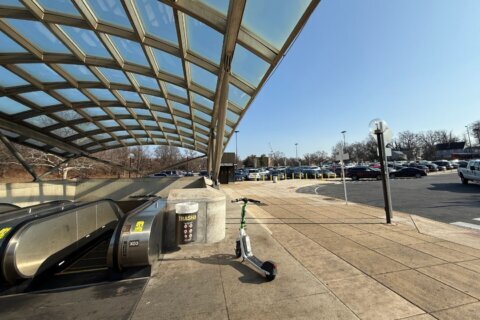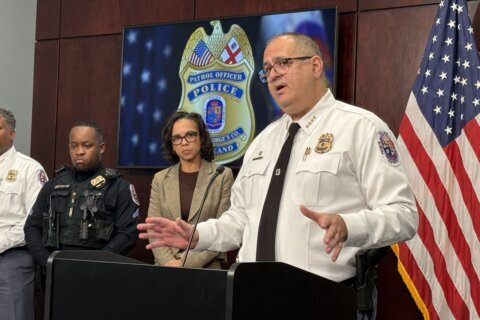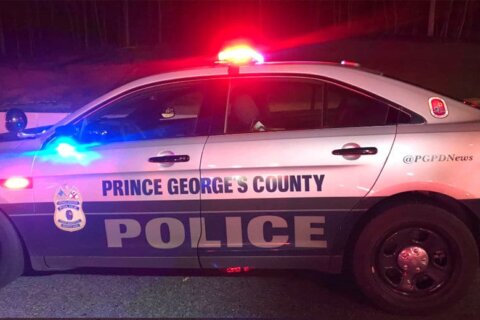More and more abandoned graves have been found on a hillside outside Sacred Heart Catholic Church in Bowie, Maryland, where the American Catholic Church was first organized centuries ago.
Over the weekend, Cardinal Wilton Gregory met face-to-face for the first time with descendants of those buried on that hill, as well as church and political leaders planning their next steps.
WTOP was the first to report last week that the number of suspected graves that have been found could number in the range of 300-to-500, with more and more church property still waiting to be inspected. Some political leaders in Maryland are now pushing for special designation from the National Park Service.
That’s what led to a special meeting and prayer service on a cold, damp and dreary Saturday afternoon in Bowie. After a meeting inside the chapel, D.C. Archbishop and Cardinal Wilton Gregory offered prayers and remorse as descendants gathered next to current parishioners.
This video is no longer available.
It was some of the most formal and heartfelt recognition that’s ever been offered to those “whose (deaths) mattered little to those who survived them,” Cardinal Gregory said. “We are trying to make sure that their lives are not lost, but more importantly that their memories are not lost.”
In a brief sermon, the Cardinal used the word “lost” to describe the circumstances and grieving of death. And as he touched on the conversations that took place inside the chapel, he admitted “we’re reminded in vivid language that there is a lot of work that needs to be done so that the lives and the identity and the dignity of the people who were once in shackles will be held in honor by those of us who remain.”
After scripture readings, a special libation was poured on the site while people who showed up shouted out the names of their ancestors. A libation is a special way of paying homage to one’s ancestors in many African cultures.
When the service was over, many lingered around the area dotted by little orange and pink flags, which signify all the places it’s likely someone was buried a long time ago.
“I’m glad our story is being told and that people are finally finding out what happened,” said Stephanie White of Upper Marlboro. Her great grandfather was among the enslaved who were sold by the Jesuits running Georgetown University and sent to Louisiana.
Jeremy Alexander also traces his lineage to that sale. His father eventually grew up in Mississippi and then moved to Chicago, where he grew up. Now, he lives in Fulton.
“I believe the ancestors have brought us back,” Alexander said, fighting back tears. “It’s been amazing. We’re very grateful to be able to understand this history of our family.”
Emotions ran high inside that meeting at the chapel before the prayer service. While some descendants were relieved by the recognition, some of them also questioned why it took so long to achieve and worry that as time goes on, what seems like a priority now might wane and be forgotten again.
Kevin Porter, a Kensington resident who can trace direct descendants on the White Marsh plantation back to around 1810, assured them that wouldn’t happen and that the Archdiocese “will be committed to the pledge.”
Porter described some of the conversations in the meeting led by Cardinal Gregory saying, “they’ll work with us as we continue to make efforts to preserve the site and that they’re sincere in their pledge.”
It’s a promise that can’t be broken, Porter said, who added that the sincerity of the commitments made must be honored.
“This is our heritage and our legacy, and we want it done right,” he said. “We have to make sure that this never happens again. That we properly acknowledge the interred here and that we honor their legacy. We need to make sure that their stories are told, told accurately and keep their legacy living on for generations. Not just for this generation, but forever.”








